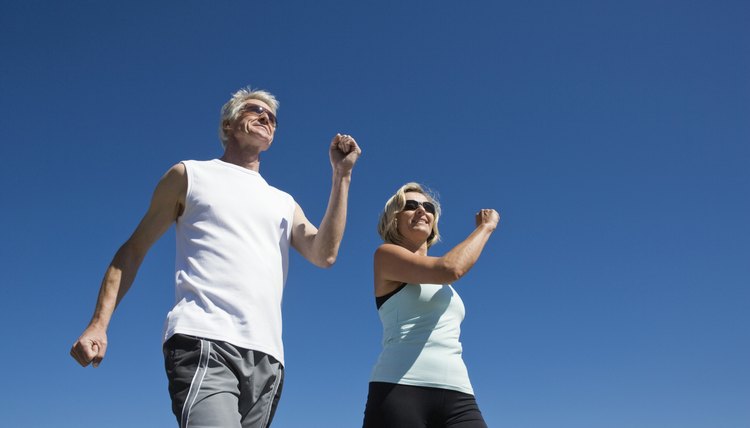How to Work Your Glutes by Walking

Walking is a good workout for burning calories and toning the muscles in your lower body. While walking is generally a good choice for working your leg muscles, simple tweaks to your routine are beneficial for working your glute, or buttock, muscles. This includes the way you walk and adding simple exercises as you walk that activate your glute muscles. A walking workout is a good choice for beginners and experts because you can tailor the exercise to your abilities and goals. Talk to your doctor before starting a new exercise routine.
Walk on uneven terrain. A flat surface doesn't provide much of a challenge to your glute muscles, but walking up and down stairs and hills optimizes the benefits of your routine. Look for outdoor paths, such as at the park, which are more likely to be uneven.
Add lunges with leg lifts to your walking routine. This move targets your buttocks muscles, but it can be incorporated into your walk. To do lunges, take a large step forward with your left leg, bending both knees to a 90-degree angle. Straighten your left leg, bring your right out to your side and back in a diagonal pattern. Swing your right leg into a lunge and lift your left leg in the same way. Alternate legs until you have done 25 lunges with each.
Include high-knee crosses while you walk. As you step, lift your left knee as high as possible, raising onto the toes of your right foot. Bend your right elbow to a 90-degree angle and swing it across your body toward your left knee. Bring your left elbow back for balance. Hold the position for one second, then lower your left leg. Repeat the move with your right leg and continue alternating for 25 repetitions on each side.
Keep your heel down on your trailing leg as long as possible. As you step, avoid lifting your heel on the leg behind you until you have to. As you lift that heel, roll forward on your foot, pushing off with your toes. This forces your glutes to engage, toning the area as you walk.
Hold dumbbells or use wrist weights as you walk. Increasing your overall body weight increases the challenge to your glute muscles, making them work harder. Combine weights with other glute activation moves to enhance the benefits to your buttocks.
Tips
A consistent walking routine offers more benefits than an occasional stroll. The Centers for Disease Control and Prevention recommends getting at least 150 minutes of exercise each week.
Combine your walking routine with a low-calorie diet to help control weight in your rear end. Too much fat covers your muscle, preventing you from seeing any toning you've done. Choose a variety of foods from each food group. Complex carbohydrates are important for fueling your walk. Brown rice, oatmeal and whole-wheat bread are good options. Protein is also important for helping your muscles function and recover after walking. Lean beef, chicken breast, fish, beans and nuts are healthy sources.
References
Writer Bio
Eliza Martinez has written for print and online publications. She covers a variety of topics, including parenting, nutrition, mental health, gardening, food and crafts. Martinez holds a master's degree in psychology.
